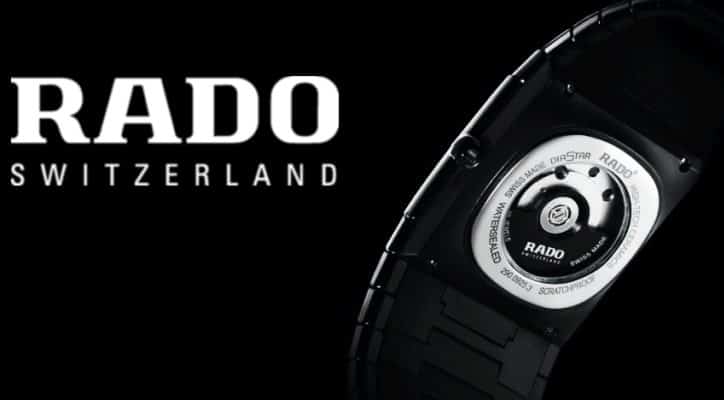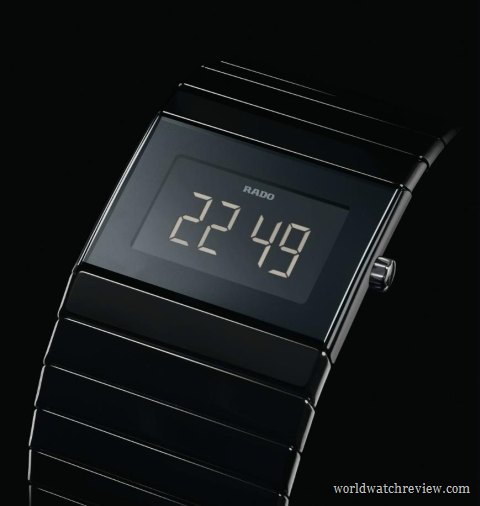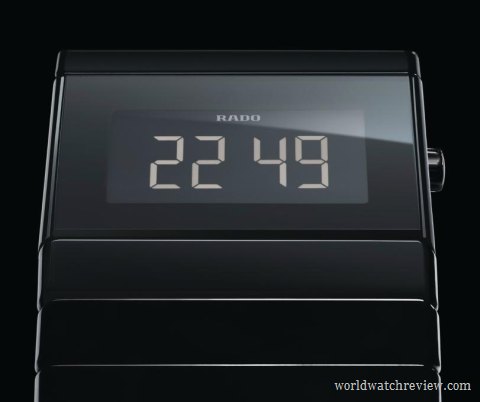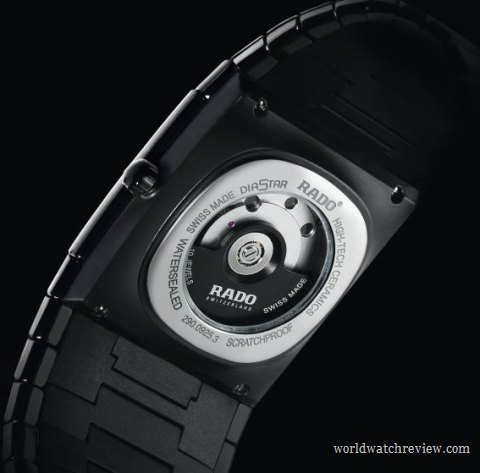
The 2010 Rado Ceramica DiaStar Digital employs a movement that was designed by ETA as an answer for the hybrid-powered Japanese quartz calibers. Equipped with a real winding rotor with a personalized black PVD-coated oscillating weight, the mechanism gets its battery constantly recharged by converting the energy of your movements into electricity
The Ceramica DiaStar is powered by the new ETA E18.711 digital-automatic caliber. Similar in principle to the wildly popular Seiko Kinetic Direct Drive auto-quartz movements (in both cases, a winding rotor charges a built-in battery providing the mechanism with enough juice to run for 3-4 months,) the new movement is a version of the Calibre H1970 originally developed by ETA for Hamilton’s recent Pulsomatic model.

Like the Hamilton Pulsomatic, the Ceramica DiaStar Digital Automatic uses not an analog, but a digital time representation interface.
Its beige-on-black LCD display is protected from the elements with a sapphire glass that looks organic together with the black high-gloss ceramic case and a comfort-looking bracelet made of the same material. While the case measures surprisingly thick (you should thank the mechanical winding module for that,) it is ergonomically curved in all the right places and doesn’t look thick, which is probably more important here.
Also, I must note that the ceramic body looks well-built: even those who don’t like the way the ceramic bracelet adds to the overall “shining” aura of the Ceramica DiaStar (there is, by the way, a model with reference number R21926159 that sports a more subdued rubber strap with a black pin buckle for them) would probably admit that the piece is solid. But, again, that’s something one should expect from a timekeeper that costs close to USD 3000.
Of course, a Super AMOLED display would look even better than the LCD device, but I suppose that even with this color scheme (AMOLED monitors do not use electricity to power pixels that are supposed to be black, that’s why cellphone makers love them so much) the display would be too draining on the tiny battery.

I am not exactly sure how they managed to do that, but this new timepiece makes a good old concept of a digital watch cool again. Even the lack of backlighting and such basic functions as a calendar, timer, and stopwatch, which we got used to in electronic watches of the 1980s, wouldn’t stop me from getting one if I was on the market for this type of timepiece.
Frankly speaking, I can even imagine myself wearing this model during a formal event with a strict dress code: even the version on the bracelet looks cool enough for a black-tie event.

See also: Seiko Ananta Spring Drive Moon Phase
Photos: Rado
Rado Ceramica DiaStar Digital Automatic specification
Price: €2800 (MSRP)
Movement: ETA E18.711 caliber, 10 jewels, hybrid-powered quartz, Swiss Made
Functions: Digital hours, minutes
Power reserve: 120 days
Case: Black ceramic with its middle part made of PVD-coated stainless steel
Bezel: Black ceramic
Bezel shape: Square
Dial: Black
Numerals: Arabic
Water resistance: 30 meters
Strap: Black ceramic bracelet
Crystal: Sapphire
Back: Transparent
